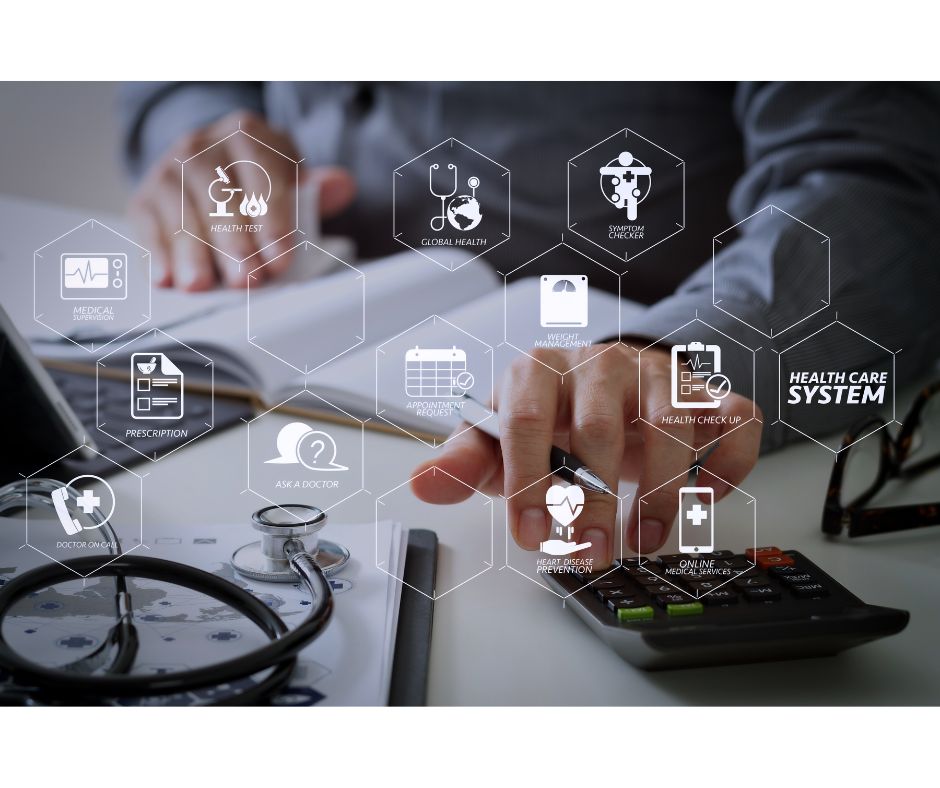As we move into a new era of connectivity, 5G technology is set to make telehealth even better. According to a study by Accenture, over 80% of healthcare executives believe 5G and telehealth will significantly impact the entire healthcare industry within the next three years.
This article discusses the transformative effects of 5G on telehealth, exploring how this lightning-fast network is improving patient care, expanding access to medical services, and changing the future of healthcare delivery.
Contents
- The Basics of 5G and Telehealth
- Overview of telehealth and its current limitations
- How 5G addresses existing telehealth challenges
- Enhanced Real-time Communication
- Remote Patient Monitoring Advancements
- Enabling Advanced Telehealth Applications
- Expanding Access to Healthcare
- 5G Challenges and Considerations
- Conclusion
- References
The Basics of 5G and Telehealth
What is 5G technology?

5G, the fifth generation of mobile networks, is a cutting-edge technology designed to enhance wireless communication. It offers significantly faster data speeds, reduced latency, and greater capacity compared to previous versions like 4G. This means that 5G can support a larger number of devices simultaneously, making it ideal for the Internet of Things (IoT) and other data-intensive applications.
In healthcare, 5G enables seamless connectivity, which is crucial for telehealth services that rely on real-time data transmission and communication.
Overview of telehealth and its current limitations
Telehealth refers to the delivery of healthcare services through digital communication technologies, allowing patients to consult with healthcare providers remotely.
While telehealth has grown significantly, it still faces several limitations like issues with video and audio quality, limited access in rural areas, and challenges with performing comprehensive physical examinations remotely (Gajarawala & Pelkowski, 2021). The current telehealth infrastructure often struggles with data transmission delays and connectivity issues, which can hinder effective patient care.
How 5G addresses existing telehealth challenges

5G technology addresses many of these challenges by providing faster and more reliable connections. Its low latency ensures that data is transmitted almost instantaneously, which is critical for real-time consultations and remote monitoring.
With 5G, telehealth services can offer high-definition video and audio quality, making virtual visits more effective and closer to in-person visits. Additionally, 5G’s ability to connect numerous devices simultaneously supports the growing demand for telehealth services and the integration of advanced technologies like AI and IoT in healthcare (Georgiou et al., 2021).
Enhanced Real-time Communication
Improved video quality for virtual doctor visits
One of the most essential benefits of 5G in telehealth is the improvement in video quality for virtual visits. High-definition video is essential for healthcare providers to accurately assess patients’ conditions remotely.
With 5G’s enhanced bandwidth, video calls are clearer and more stable, reducing the likelihood of disruptions during virtual visits. This improvement improves the patient experience and allows healthcare providers to make more accurate diagnoses and treatment recommendations.
Low latency for seamless interactions

Latency, or the delay before data transfer begins following an instruction, is a critical factor in telehealth. High latency can lead to frustrating delays and miscommunications during virtual doctor visits.
5G significantly reduces latency, enabling seamless interactions between patients and healthcare providers. This is particularly important in scenarios where immediate feedback is necessary, such as during remote surgeries or emergency telehealth visits.
Clearer audio for accurate diagnoses
Clear audio is crucial for healthcare providers to understand patients’ symptoms and concerns accurately. 5G enhances audio clarity by providing a more stable and reliable connection.
This improvement ensures that both patients and providers can communicate effectively, minimizing the risk of misdiagnosis due to poor audio quality. Enhanced audio clarity is especially beneficial in fields like mental health, where verbal communication is a key component of treatment (Georgiou et al., 2021).
Remote Patient Monitoring Advancements
Beyond improving communication, 5G improves the ways doctors keep track of their patients’ health remotely.
Real-time data transmission from wearable devices
Wearable devices have become an integral part of remote patient monitoring (RPM), allowing continuous tracking of vital signs and other health metrics.
5G technology enhances the capabilities of these devices by enabling real-time data transmission. This means healthcare providers can receive up-to-the-minute information about a patient’s condition, allowing for timely interventions and adjustments to treatment plans.
Continuous monitoring of chronic conditions

For patients with chronic conditions, continuous monitoring is essential for managing their health effectively. 5G supports the continuous transmission of data from wearable devices, ensuring that healthcare providers have access to comprehensive and accurate information (Devi et al., 2023).
This capability allows for better management of conditions such as diabetes, heart disease, and hypertension, ultimately improving patient outcomes and reducing hospital admissions.
Early detection and prevention of health issues
The ability to monitor patients in real-time also facilitates the early detection of potential health issues. By analyzing data from wearable devices, healthcare providers can identify patterns or anomalies that may indicate a developing problem.
Early detection allows time for preventive measures, reducing the risk of complications and improving overall patient health. 5G’s high-speed connectivity ensures that this data is transmitted quickly and reliably, enabling proactive healthcare management.
Enabling Advanced Telehealth Applications
The power of 5G opens up new possibilities for complex medical procedures and training.
Remote surgeries and robotic procedures

5G technology is paving the way for advanced telehealth applications, including remote surgeries and robotic procedures. With its low latency and high reliability, 5G enables surgeons to perform operations remotely using robotic systems.
This capability is particularly important in emergencies or areas lacking specialized surgical expertise. Remote surgeries are made possible by 5G’s ability to transmit high-definition video and tactile feedback in real-time to ensure precision and safety (Georgiou et al., 2021).
Augmented and virtual reality in medical training
Augmented reality (AR) and virtual reality (VR) are transforming medical training by providing immersive and interactive learning experiences. 5G supports these technologies by delivering the high-speed and low-latency connections required for seamless AR and VR applications.
Medical students and professionals can use AR and VR to practice complex procedures, visualize anatomy in 3D, and simulate real-life scenarios, enhancing their skills and knowledge without the need for physical resources.
AI-powered diagnostics and treatment planning

Artificial intelligence (AI) is becoming increasingly important in healthcare for diagnostics and treatment planning. 5G enables the integration of AI technologies into telehealth platforms by providing the necessary bandwidth and speed for processing large datasets.
AI-powered tools can analyze patient data to identify patterns, predict outcomes, and suggest personalized treatment plans. This integration enhances the accuracy and efficiency of telehealth services, leading to better patient care (Georgiou et al., 2021).
Expanding Access to Healthcare
One of the most important impacts of 5G on telehealth is how it can bring quality healthcare to more people.
Bridges the urban-rural healthcare divide

A significant impact of 5G in telehealth is its potential to bridge the healthcare gap between urban and rural areas. Rural communities often face challenges in accessing quality healthcare due to distance and limited resources.
5G enables telehealth services to reach these underserved areas by providing reliable and high-speed connectivity (Devi et al., 2023). Patients in rural areas can access virtual doctor visits, remote monitoring, and specialist care without the need to travel long distances.
Improves emergency response times
In emergencies, every second counts. 5G technology can improve emergency response times by enabling connected ambulances and real-time communication between paramedics and hospital staff.
With 5G, ambulances can transmit patient data (teleambulance services), such as vital signs and medical history, to the hospital en route, allowing for better preparation and faster treatment upon arrival. This capability can greatly improve patient outcomes in critical situations.
Facilitates specialist visits in underserved areas

Access to specialist care is often limited in underserved areas, leading to delays in diagnosis and treatment. 5G facilitates virtual visits with specialists, allowing patients to receive expert advice and care without the need for travel.
This capability is particularly beneficial for patients with rare or complex conditions that require specialized knowledge. By enabling virtual visits, 5G helps ensure that all patients have access to the care they need, regardless of their location.
5G Challenges and Considerations
While the benefits of 5G in telehealth are significant, there are also important challenges to consider.
Infrastructure requirements for 5G implementation

While 5G offers numerous benefits for telehealth, its implementation requires hefty infrastructure development. Building the necessary network infrastructure, such as towers and data centers, can be costly and time-consuming (Agrawal et al., 2023).
Additionally, healthcare facilities need to invest in compatible devices and technologies to fully leverage 5G’s capabilities. These infrastructure requirements can pose challenges, particularly for smaller healthcare providers or those in remote areas (Georgiou et al., 2021).
Data security and privacy concerns
With the increased use of digital technologies in healthcare, data security and privacy have become major concerns. 5G networks must ensure that patient data is transmitted securely and protected from unauthorized access.
Healthcare providers need to implement robust security measures, such as encryption and authentication protocols, to safeguard sensitive information. Addressing these concerns is crucial for maintaining patient trust and compliance with regulations (Gajarawala & Pelkowski, 2021).
Equitable access to 5G-enabled telehealth services

Ensuring equitable access to 5G-enabled telehealth services is essential for maximizing their benefits. While 5G can improve healthcare access in underserved areas, disparities in technology adoption and infrastructure still exist.
Efforts must be made to ensure that all communities, regardless of socioeconomic status or location, can access and benefit from 5G telehealth services. This includes addressing affordability, digital literacy, and infrastructure gaps.
Conclusion
From enhancing the quality of virtual doctor visits to enabling groundbreaking remote procedures, 5G with telehealth is a combo that’s set to improve patient outcomes and expand access to vital medical services.
To make the most of 5G and telehealth, and address the challenges related to telehealth implementation, security, and equity, healthcare providers, patients, and policymakers must work together. The future of healthcare is powered by 5G.
References
Agrawal, V., Agrawal, S., Bomanwar, A., Dubey, T., & Jaiswal, A. (2023). Exploring the Risks, Benefits, Advances, and Challenges in Internet Integration in Medicine With the Advent of 5G Technology: A Comprehensive Review. Cureus; i(11). doi.org/10.7759/cureus.48767
Baldwin, P. (2021). How 5G can transform telemedicine to tackle today’s toughest challenges. Qualcomm. Retrieved from https://www.qualcomm.com/news/onq/2021/01/how-5g-can-transform-telemedicine-tackle-todays-toughest-challenges
Crews, J. 5G: Bridging or Amplifying the Rural-Urban Divide? Heartland Forward. Retrieved from https://heartlandforward.org/case-study/5g-bridging-or-amplifying-the-rural-urban-divide/
Devi, D. H., Duraisamy, K., Armghan, A., Alsharari, M., Aliqab, K., Sorathiya, V., Das, S., & Rashid, N. (2023). 5G Technology in Healthcare and Wearable Devices: A Review. Sensors (Basel, Switzerland); 23(5). doi.org/10.3390/s23052519
Everything you need to know about 5G. (n.d.). Qualcomm. Retrieved from https://www.qualcomm.com/5g/what-is-5g
Foo, M. 8 Ways That 5G Benefits Healthcare (n.d.). ABI Research. Retrieved from https://www.abiresearch.com/blogs/2023/01/03/5G-in-healthcare/
Gajarawala, S. N., & Pelkowski, J. N. (2021). Telehealth Benefits and Barriers. The Journal for Nurse Practitioners; 17(2), 218-221. doi.org/10.1016/j.nurpra.2020.09.013
Georgiou, K. E., Georgiou, E, Satava, R. M. (2021). 5G Use in Healthcare: The Future is Present. Journal of the Society of Laparoscopic & Robotic Surgeons; 25(4):e2021.00064. doi: 10.4293/JSLS.2021.00064
Gillis, M. (2022). More Than 80% of Healthcare Executives Expect the Metaverse Will Have a Positive Impact on Their Organizations, According to a New Accenture Report. Accenture. Retrieved from https://newsroom.accenture.com/news/2022/more-than-80-percent-of-healthcare-executives-expect-the-metaverse-will-have-a-positive-impact-on-their-organizations-according-to-a-new-accenture-report
Lensing, M. (2019). 5G can help deliver better insights into patient health. AT&T Business. Retrieved from https://www.business.att.com/learn/top-voices/5g-can-help-deliver-better-insights-into-patient-health.html
Maheu, M. (2024). See How 5G Technology Can Improve Your Healthcare Service. Telehealth.org. Retrieved from https://telehealth.org/see-how-5g-technology-can-improve-your-healthcare-service/
Seitz, S. (2024). The Impact of 5G on Connected Devices. Sequenex. Retrieved from https://sequenex.com/the-impact-of-5g-on-connected-devices/
Udell, C. (2023). 5G Security Concerns & Privacy Risks. MRL Consulting Group. Retrieved from https://www.mrlcg.com/resources/blog/5g-security-concerns—privacy-risks/























































































